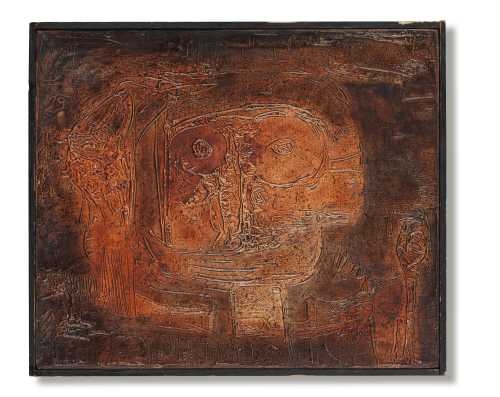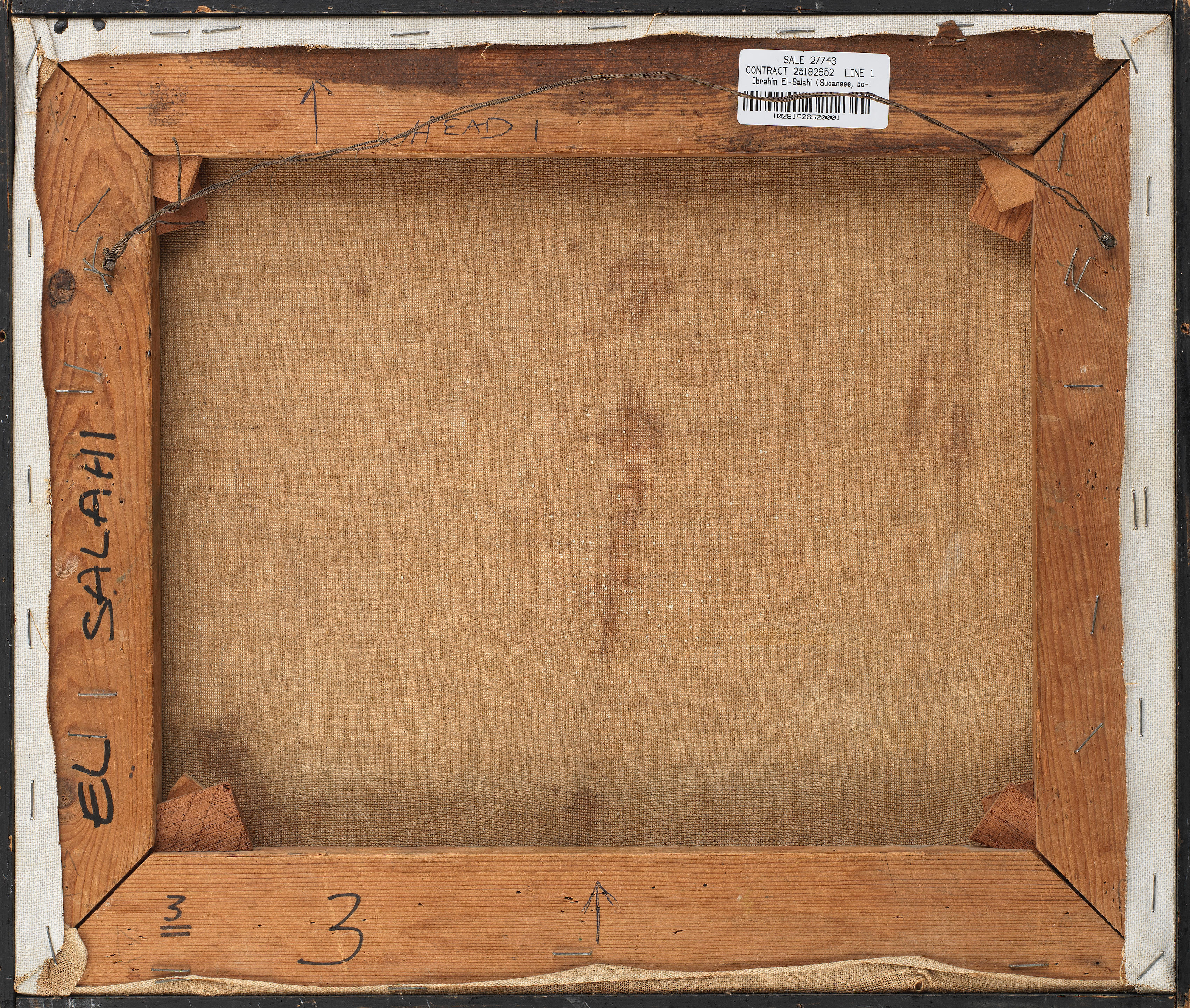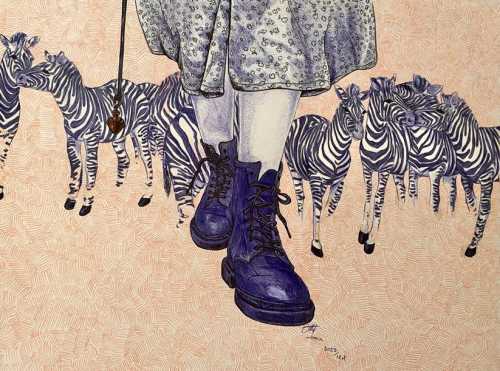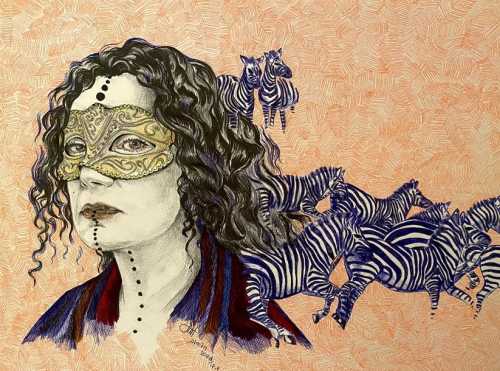- Head I 1965 - 1969
- Mixed media, oil and enamel on canvas
- Painting
- 40 * 30 cm
- signed "EL SALAHI" and inscribed "Head I" on the verso, executed circa late 1960's
Estimation
£40,000
50,169 USD
-
£60,000
75,254 USD
Unsold
Artwork Description
"With the colours I was trying very hard to create something that appealed to the Sudanese public. You can almost smell the air and the dust in it. It's the colour of the savanna, the desert. Apart from the Nile, there is not much green in Sudan. I was trying to create a work that reflects the country's actual colours. I was keen to link it with people because I don't think an artist should live in isolation from his audience. I tried to use what they appreciate: a dark brown, which is burnt sienna, and black. I just tried to be as close as possible to nature, and to the people I live with and love"
- Ibrahim El Salahi
"To me the bird represents a sense of freedom. I am thinking of the people and their nomadic lives – they reject authority and they are all by themselves"
- Ibrahim El Salahi
Bonham's is immensely privileged to present two astounding 1960's oil paintings by the doyen Sudanese modernism, Ibrahim El Salahi, the first canvas paintings by the artist to ever appear at international auction.
In Head I, Salahi weaves together the modernist visual language absorbed during his European studies with local colours and symbolism. A large, almost primitive head is seen interlaced with folk animal motifs, the most important of which is the bird, a powerful symbol with both personal and religious meaning for the artist. For Salahi, the bird represents artistic freedom, as well as the nomadic freedom of Sudanese tribal life. In its religious and Quranic interpretation, the Sufi's believe that birds speak a mystical tongue which is said to be understood only by winged creatures as an indication of their favour in the eyes of the Divine.
Both works are painted in tar-like mixed media and enamel that would comprise Salahi's signature technique upon the artists return to Sudan, representing the commencement of Salahi's mature period. Salahi's use of colour and media was very much a concerted effort on his part to reflect the tonal and environmental characteristics of his native land, and the artist notes of these series of works that you can "almost smell the air and the dust in them"
On this particular period of his oeuvre, Salahi states that he returned to Sudan "a conceited young artist fresh from London" but, "Over time I came to see that conditions in Sudan required a very different approach on the part of the artist... If I was to have a relationship with an audience, I had to examine the Sudanese environment, identify what it offered.... As an artistic resource...". Accordingly El-Salahi stopped painting for two years embarked on a long and open ended exploration of "what kinds of art were shown, and therefore appreciated, in typical Sudanese homes and public places... I was amazed to rediscover the riches I had seen all around me during my childhood, and whose value and rich meanings I had for years abysmally failed to grasp".
This search for a style culminated in the foundation a movement that became known as the Khartoum School, "hoping to fill the gap between the artist and his audience, the cumulative outcome of different historical, social and political factors, I began an experiment later called "the Khartoum School". The common factor in the Khartoum School work was the abstract and representational symbolic potential of the Arabic letter". Developed along with fellow artists such as Ahmed Shibrain and Kamala Ishag, the Khartoum school became then the foundational, visual language of Sudanese Modernism
Ibrahim Salahi is widely considered the founding father of Sudanese Modernism. In 1953 the Sudan government sent Salahi to the Slade School of Art for three years, where he specialised in painting and drawing. Returning to Sudan in 1957, Salahi taught for a number of years at the School of Fine and Applied Art, Khartoum Polytechnic, now Sudan University. UNESCO and Rockefeller Foundation scholarships gave him the opportunity to work and travel in the US twice in the 1960s. After a short period back in London as assistant cultural attaché at the Sudanese Embassy, in 1972 he became the Sudan government's undersecretary for culture and information, a job which landed him in jail as a political prisoner, having been wrongly suspected of anti-government activities.
In 1977, he went into voluntary exile in the Gulf State of Qatar, where he worked as an adviser and translator for the government, and in the UK. He is now based in Oxford. Salahi's work is held in several major institutions including The British Museum, London; The Museum of Modern Art, New York; The Metropolitan Museum of Art, New York, and Mathaf: Arab Museum of Modern Art, Doha
- Ibrahim El Salahi
"To me the bird represents a sense of freedom. I am thinking of the people and their nomadic lives – they reject authority and they are all by themselves"
- Ibrahim El Salahi
Bonham's is immensely privileged to present two astounding 1960's oil paintings by the doyen Sudanese modernism, Ibrahim El Salahi, the first canvas paintings by the artist to ever appear at international auction.
In Head I, Salahi weaves together the modernist visual language absorbed during his European studies with local colours and symbolism. A large, almost primitive head is seen interlaced with folk animal motifs, the most important of which is the bird, a powerful symbol with both personal and religious meaning for the artist. For Salahi, the bird represents artistic freedom, as well as the nomadic freedom of Sudanese tribal life. In its religious and Quranic interpretation, the Sufi's believe that birds speak a mystical tongue which is said to be understood only by winged creatures as an indication of their favour in the eyes of the Divine.
Both works are painted in tar-like mixed media and enamel that would comprise Salahi's signature technique upon the artists return to Sudan, representing the commencement of Salahi's mature period. Salahi's use of colour and media was very much a concerted effort on his part to reflect the tonal and environmental characteristics of his native land, and the artist notes of these series of works that you can "almost smell the air and the dust in them"
On this particular period of his oeuvre, Salahi states that he returned to Sudan "a conceited young artist fresh from London" but, "Over time I came to see that conditions in Sudan required a very different approach on the part of the artist... If I was to have a relationship with an audience, I had to examine the Sudanese environment, identify what it offered.... As an artistic resource...". Accordingly El-Salahi stopped painting for two years embarked on a long and open ended exploration of "what kinds of art were shown, and therefore appreciated, in typical Sudanese homes and public places... I was amazed to rediscover the riches I had seen all around me during my childhood, and whose value and rich meanings I had for years abysmally failed to grasp".
This search for a style culminated in the foundation a movement that became known as the Khartoum School, "hoping to fill the gap between the artist and his audience, the cumulative outcome of different historical, social and political factors, I began an experiment later called "the Khartoum School". The common factor in the Khartoum School work was the abstract and representational symbolic potential of the Arabic letter". Developed along with fellow artists such as Ahmed Shibrain and Kamala Ishag, the Khartoum school became then the foundational, visual language of Sudanese Modernism
Ibrahim Salahi is widely considered the founding father of Sudanese Modernism. In 1953 the Sudan government sent Salahi to the Slade School of Art for three years, where he specialised in painting and drawing. Returning to Sudan in 1957, Salahi taught for a number of years at the School of Fine and Applied Art, Khartoum Polytechnic, now Sudan University. UNESCO and Rockefeller Foundation scholarships gave him the opportunity to work and travel in the US twice in the 1960s. After a short period back in London as assistant cultural attaché at the Sudanese Embassy, in 1972 he became the Sudan government's undersecretary for culture and information, a job which landed him in jail as a political prisoner, having been wrongly suspected of anti-government activities.
In 1977, he went into voluntary exile in the Gulf State of Qatar, where he worked as an adviser and translator for the government, and in the UK. He is now based in Oxford. Salahi's work is held in several major institutions including The British Museum, London; The Museum of Modern Art, New York; The Metropolitan Museum of Art, New York, and Mathaf: Arab Museum of Modern Art, Doha
More lots by Ibrahim El-Salahi
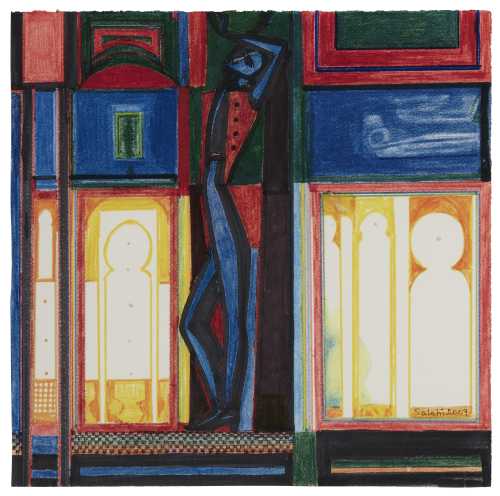
Flamenco
Estimation
£18,000
23,220 USD
-
£25,000
32,250 USD
Realized Price
£22,680
29,257 USD
5.488%
Sale Date
Christie's
-
31 October 2024
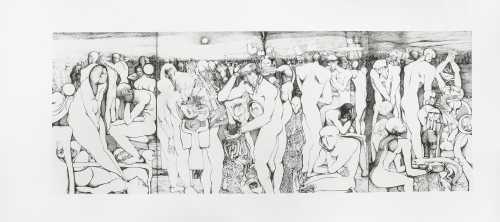
The Resurrection
Estimation
£15,000
18,813 USD
-
£20,000
25,085 USD
Sale Date
Bonhams
-
24 May 2022
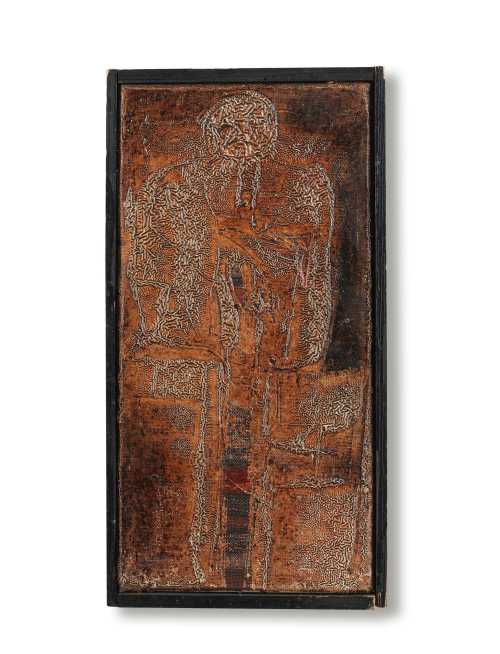
Untitled (Standing Figure)
Estimation
£20,000
25,085 USD
-
£30,000
37,627 USD
Sale Date
Bonhams
-
24 May 2022
Realized Price
29,257 USD
Min Estimate
23,220 USD
Max Estimate
32,250 USD
Average Artwork Worth
+5.488%
Average Growth of Artwork Worth
Sales Performance Against Estimates
Similar Artworks
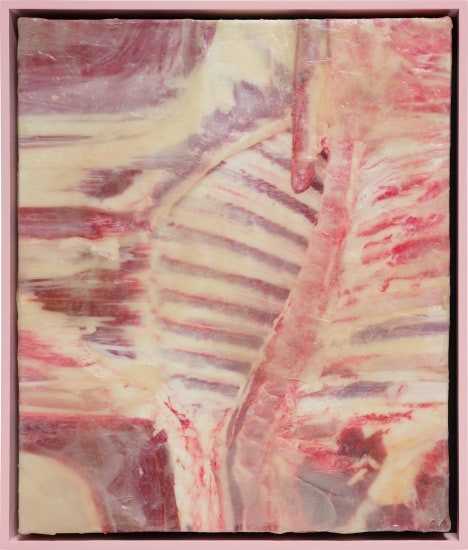
Boyfriend_04.JPEG
Estimation
$8,000
-
$12,000
Sale Date
Phillips Auction
-
28 February 2025
